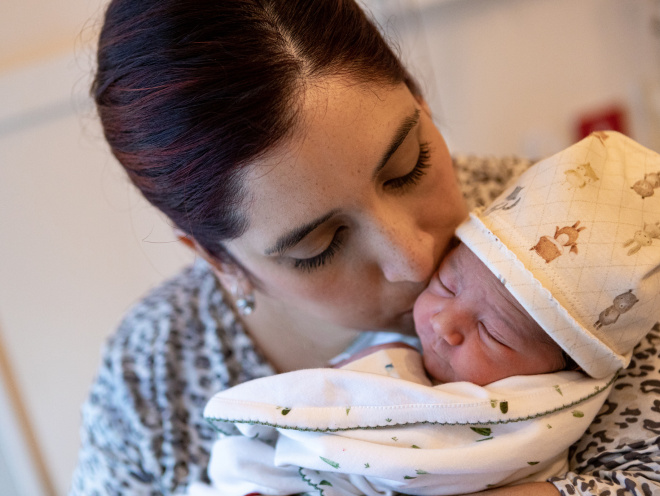While perineal tearing is common, episiotomies are not routinely given but you may have had one. Women and those giving birth along with those supporting them, may find this a traumatic experience. Here we discuss care and recovery, how to help your body heal and where you can find emotional support. Our other article explains more about perineal tears and episiotomy during childbirth.
How long does healing take?
Perineal grazes and tears are usually healing well after a couple of weeks. It can take up to a month for an episiotomy to heal and for the stitches to dissolve (NHS, 2023). Here’s how you can help yourself recover.
1. Rest when you can to promote healing
Rest will help your body recover and heal from the birth. It can help to lay down and uncover your stitches – fresh air can help with healing. Take off your underwear and lay on a towel on your bed for 10 minutes or so a couple of times a day (NHS, 2023).
2. Ways to help cope with pain
It’s common to feel pain after a tear or episiotomy and there are things you can do to feel more comfortable. Suggestions include:
- Putting an ice pack wrapped in a towel or cloth onto the affected area.
- Use a ‘Valley’ cushion, or two rolled up towels which leave a ‘valley’ in the middle, to reduce pressure on the perineum and make sitting down more comfortable.
- Some people say having a warm bath helps them relax and eases pain.
- Painkillers may also help bring relief (NHS, 2023):
- Paracetamol or Ibuprofen – are safe to use if breastfeeding.
- Aspirin is NOT recommended if you are breastfeeding because it can pass to your baby via your breastmilk.
- If over-the-counter medication is not enough, ask for support from your midwife, health visitor or GP.
- The Breastfeeding Network offers Drugs in breastmilk factsheets so you can check for yourself (Breastfeeding Network, No date).
If the pain hasn’t reduced after 2 or 3 weeks, talk to a health professional (NHS, 2023).
3. Help make toilet visits more comfortable
It can be uncomfortable going to the toilet while you are recovering from an episiotomy. It’s a good idea to:
- Eat a diet that includes plenty of vegetable fibre and stay hydrated – this will help prevent constipation.
- Pour warm water over your vulva while you wee to help reduce stinging. You may be able to squat rather than sit, which can also help.
- Pour warm water over your vulva and perineum after going to the toilet, and always pat or wipe from front to back to keep your stitches clean.
- To relieve pressure on the wound, hold a clean pad and press lightly against your stitches while you go for a poo.
- Use a stool softener if passing stools is particularly painful.
(NHS, 2023; RCOG, No date)
4. Reduce the chance of infection
Keep the area clean by washing daily with just water and changing maternity pads frequently. Wash your hands before and after going to the toilet (RCOG, No date).
Signs of infection would be:
- Red, or darker, swollen skin around the wound
- persistent pain
- a smell that isn't usual for you
- pus or liquid coming from the cut.
(NHS, 2023)
Tell your midwife, health visitor or GP as soon as you can about any possible signs of infection, so they can arrange any necessary treatment.
5. Exercise to aid recovery
Pelvic floor exercises will help enhance blood circulation and aid the healing process (NHS, 2023).
6. Scar tissue
For a few women the scar can feel itchy or uncomfortable. If that’s your experience, you could talk to your GP (NHS, 2023).
7. Pain during sex
After a tear or episiotomy you can have sex again when you feel comfortable to. Pain during sex is common in the first few months, even without an episiotomy (NHS, 2023). Most women and those that have given birth find that this improves with time. Read our article about having sex after having a baby.
Use water-based rather than oil-based lubricants, which can irritate the vagina as well as damaging latex condoms or diaphragms (NHS, 2023).
8. Emotional support
In addition to physical trauma, a significant birth injury can lead to embarrassment, depression or emotional distress, and a more difficult relationship with your child and partner (MASIC, No date). Organisations such as MASIC offers specialist support.
For some women the episiotomy is one part of a larger traumatic experience. You can read more about birth trauma in our article.
If it still doesn't feel right
If you are concerned about your healing following a perineal tear or episiotomy, it’s important to talk to a health professional in case there’s an infection preventing healing. Some women find it helpful to take photographs to check the progress of their healing, and to show to the health professional if necessary. You can then get treatment if required.
This page was last reviewed in May 2024
Breastfeeding Network (No date) Drugs in breastmilk factsheets. Available at: https://www.breastfeedingnetwork.org.uk/drugs-factsheets/ [Accessed 9 May 24]
MASIC (No date) About MASIC. Available at: https://masic.org.uk/about-masic/ [Accessed 9 May 24]
NHS (2023) Episiotomy and perineal tears. Available from: https://www.nhs.uk/pregnancy/labour-and-birth/what-happens/episiotomy-and-perineal-tears/ [Accessed 8 May 24].
RCOG (No date) Perineal tears and episiotomies during childbirth. Available at: https://www.rcog.org.uk/for-the-public/perineal-tears-and-episiotomies-in-childbirth/ [Accessed 8 May 24]






